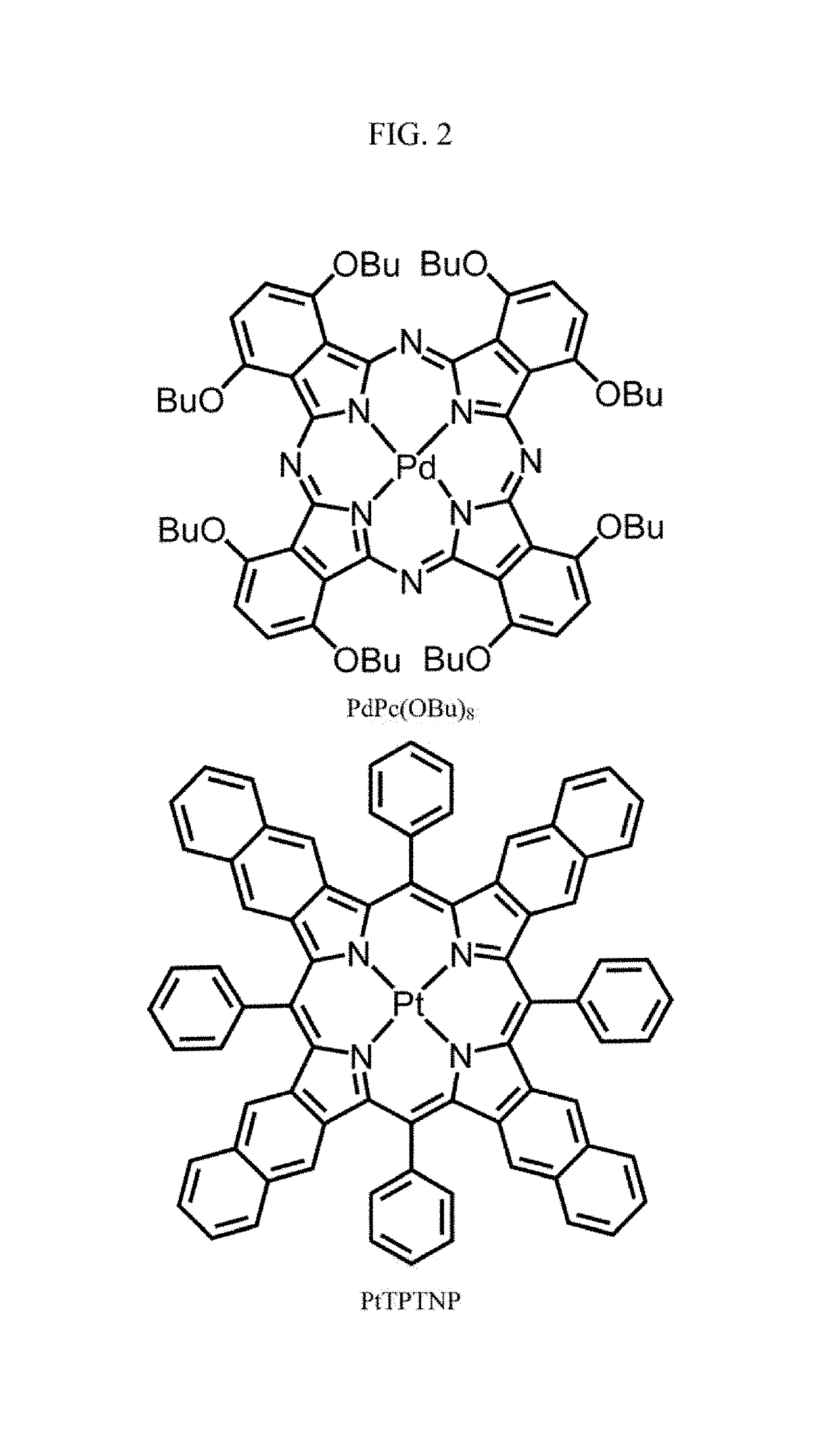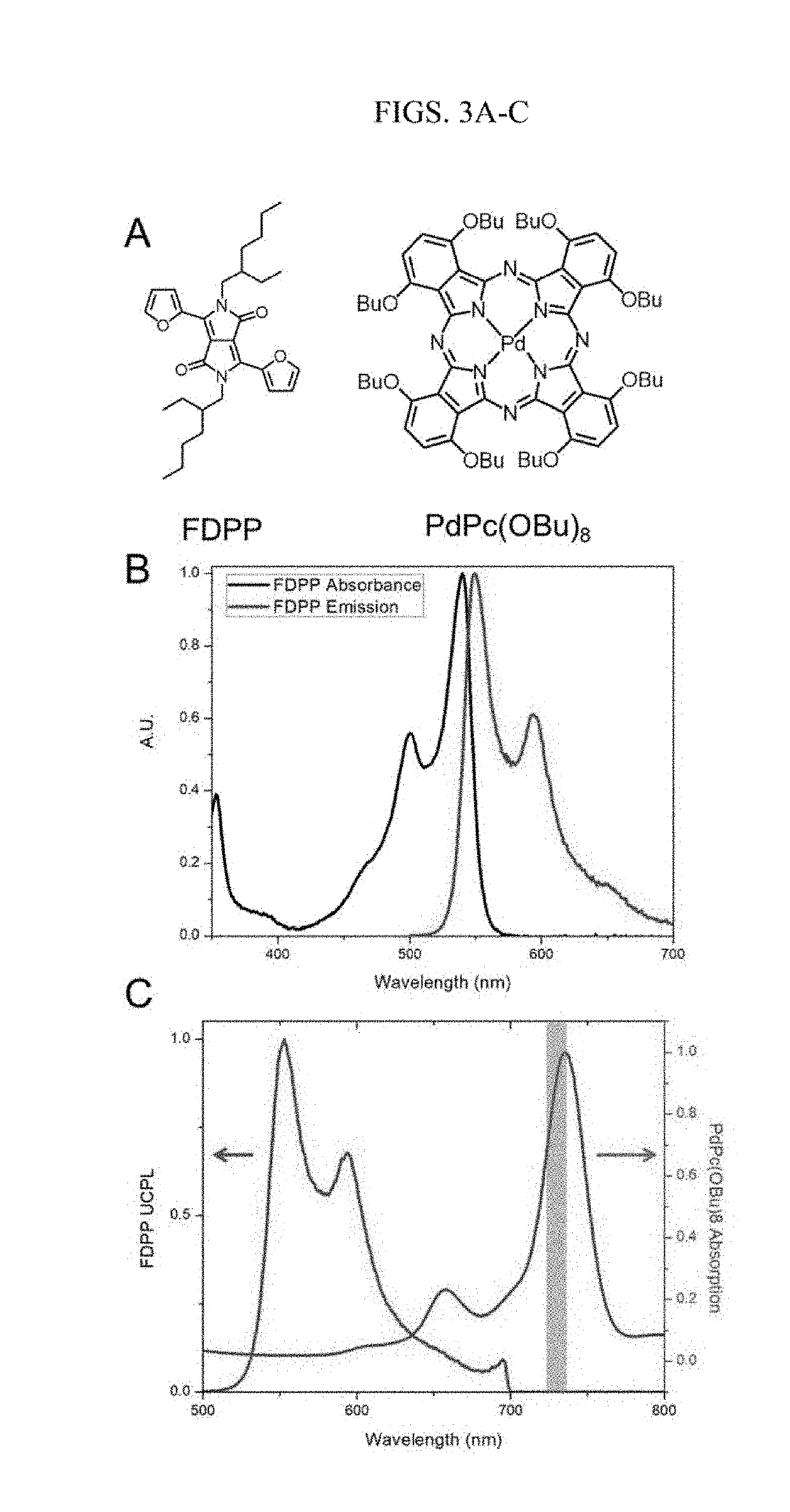Triplet fusion upconversion for infrared-sensitized photoredox chemistry
a triplettriplet and photoredox chemistry technology, applied in the field of photoreactions, can solve the problems of limited material penetration, low material penetration, and limited photochemical transformations, and achieve the effect of widening the scope of substrates
- Summary
- Abstract
- Description
- Claims
- Application Information
AI Technical Summary
Benefits of technology
Problems solved by technology
Method used
Image
Examples
example 1
[0123]Triplet-triplet annihilation (TTA) is an upconversion process which can be driven by low-power noncoherent light sources, which enhances safety and is of practical and economic benefit. In TTA-upconversion, a low-energy photon is absorbed by a photosensitizer, which then undergoes intersystem crossing (ISC) to form a more stable triplet state. The triplet state energy of the photosensitizer is subsequently transferred to a molecule which is thus excited to its triplet state. Two such molecules in the triplet state can then combine their energies through TTA to form one molecule in the singlet state (with higher energy), and another in the ground state. (Those molecules are often termed annihilators because their interaction “annihilates” the triplet state.) The molecule in the singlet state can relax to the ground state, usually by emission of a higher-energy photon.
[0124]Relaxation to the ground state can also be achieved by Forster resonance energy transfer (FRET). TTA-UC is...
example 2
[0145]This exemplary embodiment uses PtTPTNP as a photosensitizer and TTBP as the annihilator in a composition for triplet upconversion, due to their unexpected high upconversion efficiency. One of ordinary skill will understand how to combine the photosentizer and annihilator with other components of a composition, such as a carrier material, cleavage moiety or releasable moiety.
example 3
[0146]To demonstrate the ability of NIR light (730 nm), versus blue light (450 nm), to penetrate a range of media, we performed the MMA polymerization with 5% ethylene glycol dimethacrylate as a crosslinker to generate a freestanding gel, while using several visible-light-absorbing materials to disrupt the path of the incident laser (FIG. 4). Reactions that bypass the barrier create a gel.
[0147]A PMMA gel was synthesized with an NIR light source through various different barriers; meanwhile, a gel was not formed when the 450-nm blue light source was used, presumably owing to its limited penetrating ability. The chemical reaction, and corresponding results, are tabulated below.
MaterialNIRBlueAirGelGelWaterGelGelAmber glassGelNo reactionBaconGelNo reactionRu(bpy)3(PF6)2 (1.5 mM)GelNo reaction700-nm long-pass filterGelNo reactionWhite silicone sheetGelNo reaction3 sheets white paperGelNo reactionHemoglobin (0.2 mM)GelNo reactionPig skin (6.4 mm)GelNo reaction*Experiment halted after 15...
PUM
 Login to View More
Login to View More Abstract
Description
Claims
Application Information
 Login to View More
Login to View More - R&D
- Intellectual Property
- Life Sciences
- Materials
- Tech Scout
- Unparalleled Data Quality
- Higher Quality Content
- 60% Fewer Hallucinations
Browse by: Latest US Patents, China's latest patents, Technical Efficacy Thesaurus, Application Domain, Technology Topic, Popular Technical Reports.
© 2025 PatSnap. All rights reserved.Legal|Privacy policy|Modern Slavery Act Transparency Statement|Sitemap|About US| Contact US: help@patsnap.com



